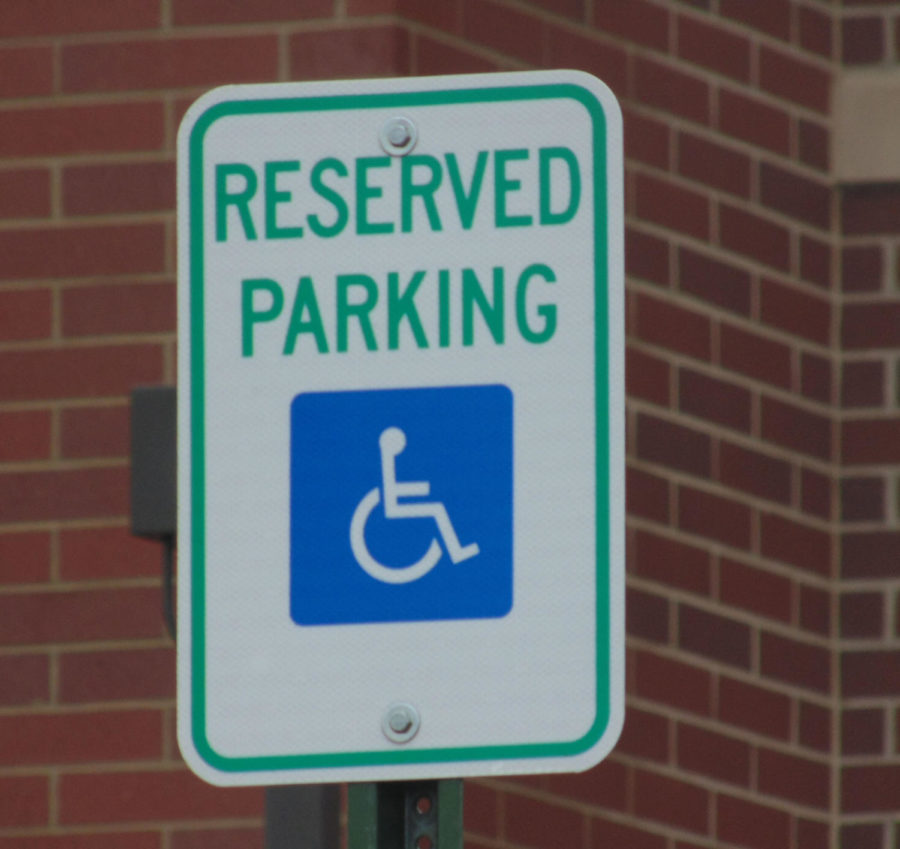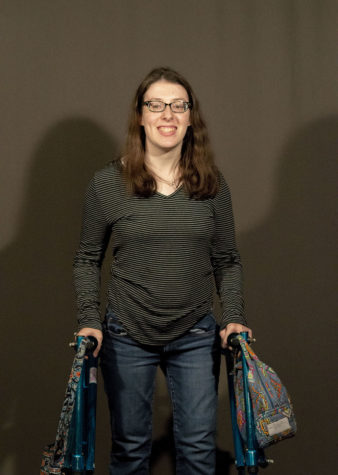It’s time to put the abuse in park
Millions of handicapped parking spaces are being abused every day
Photo by Gracie Elmer
Handicapped parking is being constantly abused
March 13, 2018
Oftentimes, when people think of abuse, their minds gravitate to drug or alcohol misuse. However, another kind of abuse drifts around global communities as if it were in the air, and millions of people just turn a blind eye to it. Based on how many people participate in it, this type of misuse should simply be referred to as an unspoken epidemic. This infection that is silently corrupting people’s minds every single day is none other than the abuse of handicapped parking.
Originally, handicapped spaces were invented to help people with various physical disabilities park closer to their destination. Now, handicapped parking tags are obtainable and usable by almost every single person across the U.S. and overseas. However, this simple fact begs the question: Can handicapped parking spaces still be called such if they are now being used so frequently by non-disabled people?
More often than not, the actual purpose for these spaces is often overlooked when compared to the reality of how they are used. The purpose of handicapped parking is to aid people with many different physical disabilities.
Senior Zack Reising knows more about this situation than most people. Reising uses a walker to help with mobility. In addition, Reising is a licensed driver, so finding an available handicapped parking space is a constant challenge for him.
“A person may have CP [cerebral palsy], they may have just had a knee replacement, or they may have experienced any other sort of major surgery,” Reising said.
“You don’t realize what it takes to walk into a building,” Spanish teacher Autumn Pasa said. “And for those that it’s more difficult, you want to give them the least distance to go. You’re hurting someone who needs it.”
Pasa suffered a knee injury a few months ago, and during her recovery, she found much more difficulty than she was expecting in regards to handicapped parking availability.
“We just live in a world where some people don’t think that all of the rules apply to them. There are those who would take advantage,” Pasa said.
More often than not, many of these parking spaces are occupied by people who have no physical disabilities.
“For one, the abuser that does park in the space doesn’t see the sign when he pulls into the parking space. When [the abuser] gets out of their car, they look like any average Joe,” Reising said.
In the first place, handicapped parking was invented to help only people who are physically disabled. It was intended to help a man who had his legs blown off or spine fractured in Afghanistan, not a woman getting her groceries who chooses to park in that space and doesn’t want to walk all that distance.
Handicapped parking spaces are necessary for people with physical disabilities so that they will not become physically exhausted and fatigued by long distances before they reach their destination.
By depriving disabled people of a necessary handicapped parking space, people without physical disabilities are depriving those people of their equality and rights to a minor degree in terms of parking. However, the abuse is nowhere near close to ending.
Today, handicapped parking spots are often viewed as a convenience by many, but that is because there are hardly any limitations as to who can use them.
“The person that drives needs to have their vehicle registered to the BMV, saying that the vehicle is driven by a handicapped person,” Reising said.
Truthfully, the condition of needing to use handicapped parking can transform a person’s perspective on the subject, just like any other situation where a person begins to view some parts of life differently due to some unforeseen circumstances.
“I just saw another side of things,” Pasa said.
We need to put an end to this corruption so that we can take one more step towards ease for those who are carelessly deprived of it.




